Portugal is a relative newcomer to the wine market in the US and as such are generally priced lower than comparable wines from Europe, making them incredible value. Their wines are typically not aged as much and have a fresh, crisp and fruitier note to them. One of my favorites from the country are Vinho Verdes. Literally translated as 'young wines', and originating from the Minho province of North Portugal, they are consumed in the same season as they are bottled. They are one of least known and best crisp Summer value wines you can find this season!
Read Moreappetizer
Sumac and Mint Marinated Goat's Cheese
For me Summer heralds a not-so-subtle switch in lifestyle. Outdoor fun, roof top gatherings, long long days for long long amusements, days when you can be dine with work and still have time to play in the light! More, importantly though, this is season, I become more vegetable focuses, swept away by the abundance of variety and richness of flavor that marks this season.
I also start my herb garden and distinctly look forward to using as much of it as possible. The sweet distinct aromas that simply make the dish from ordinary to elegant. This is my joy.
Today's recipe was one such inspiration I stumbled upon through Jul's blog. As you can see from her and my creations, it is an all weather recipe using the best herbs of the season. However, the line that struck a chord with me was that the flavors of fresh goat cheese is akin to lamb. In fact, that is why it makes so much sense to pair them as is often done.
Read MoreThe irony of grain free ..... and due credit
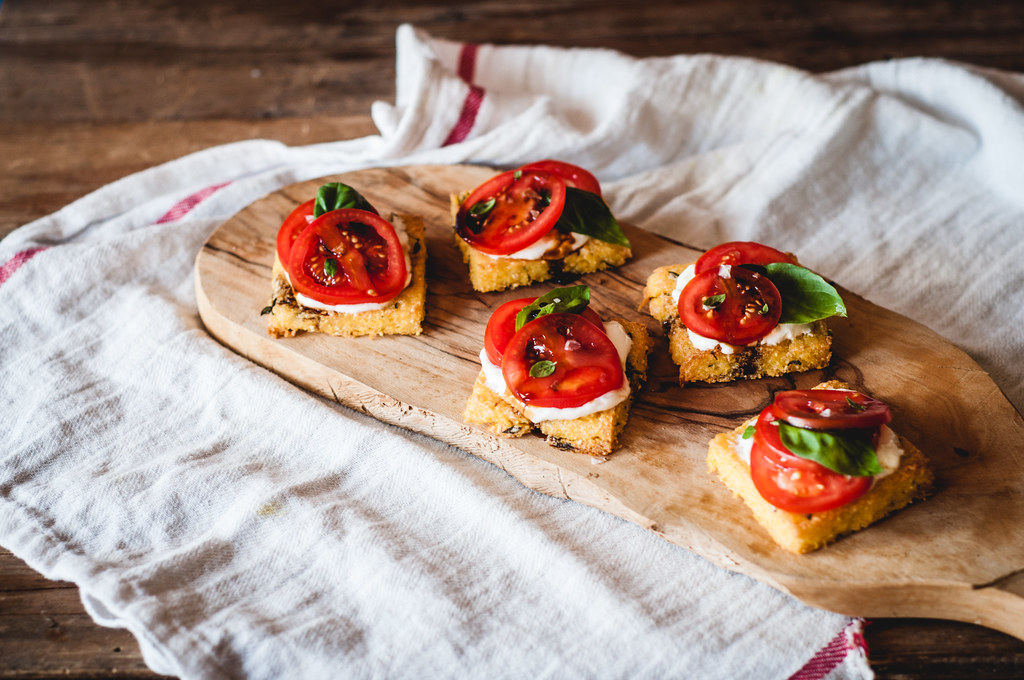
You have probably heard this rant before, even from me. About food being increasingly commoditized and 'corn' being the poster child of the industrialization of agriculture. Oddly though, corn, for all its versatility of use, processed or otherwise, and villifaction, is not the most traded food commodity. As a grain, wheat and soybean rank higher in volumes traded. Yet, perhaps it is same versatility, and omniscience of it in its various form in pretty much every processed food, that lends to the sorcery of it.
The irony here, as I have been finding out over the past week since I went on an elimination diet, is that corn has been the knight in shining armor in being a satisfying grain replacement.
When I recently found out that I am wheat allergic, I cut it out for the most part. But, I don't know exactly what I am allergic to. Is it the grain, the flour or only processed versions of it? I don't know. And, I suspect that it isn't the only food that troubles me.
One would automatically think to do a scientific test. Unfortunately, there is no single comprehensive allergy test that covers all the possible allergens. For example, I recently met someone who did the test because he was having reactions sometimes but did not know to what and the test came up negative. Only by a serendipitous allergic reaction, did he realize that he was allergic to sesame, a seed that is not normally tested for allergens. So, I figured the best thing to do, as with anything related to consumption of food, is to do it intuitively. The elimination diet was the way to go, for me.
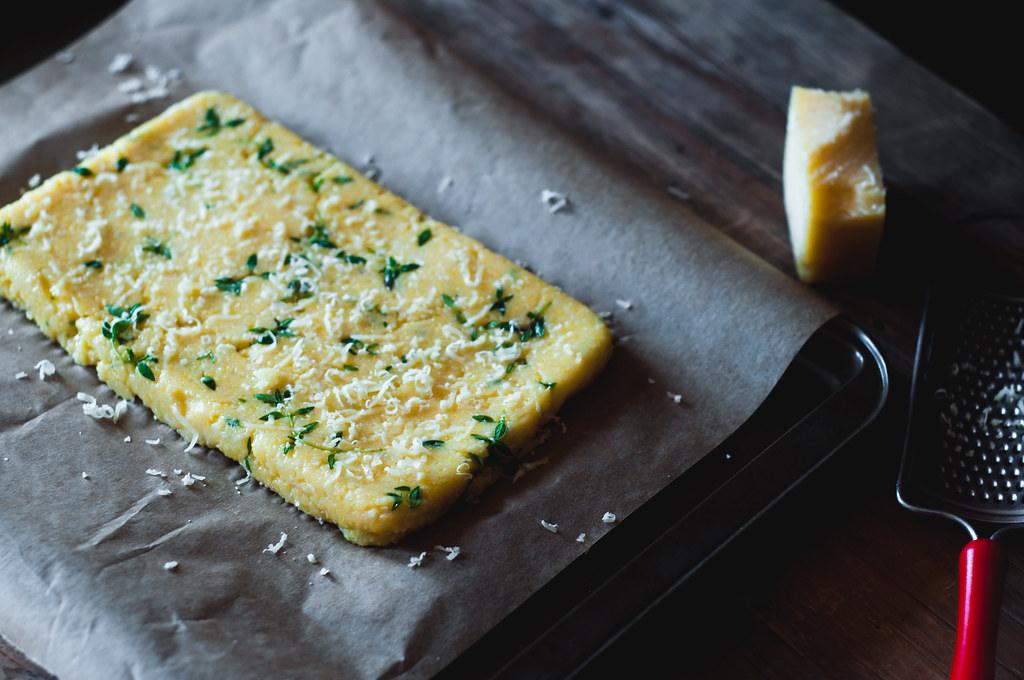
Instinctively, it has a scientific base of eliminating all possible and suspected allergens and bring the body back to feeling normal, the Control group. Then by introducing one item at a time individually, it is easy to identify the villian that causes issue and then work on eliminating it with confidence.
So, in my case, I have eliminated all grains, except oats, dairy, except culture yogurt. So, this means, not only am I gluten free but all dairy free for the most part. Let me start by saying that I feel awesome! At this point, after a week, I have no gluten cravings. I even pass by the flakiest croissants with not even a second glance. It is of course opportune that it is Summer and the bounty of vegetables keeps my thrilled about my meals and satisfied. I eat a lot of fish and most often, protein with huge helping of vegetables stays me really well.
However, there are times that I do miss something that a grain can offer. This is were corn comes in front, middle and back. I have always been a fan of polenta and I am now eating it in more ways than before. It is my staple porridge like meal. I am baking it into bread, and I am scoring the web for more inspirations.
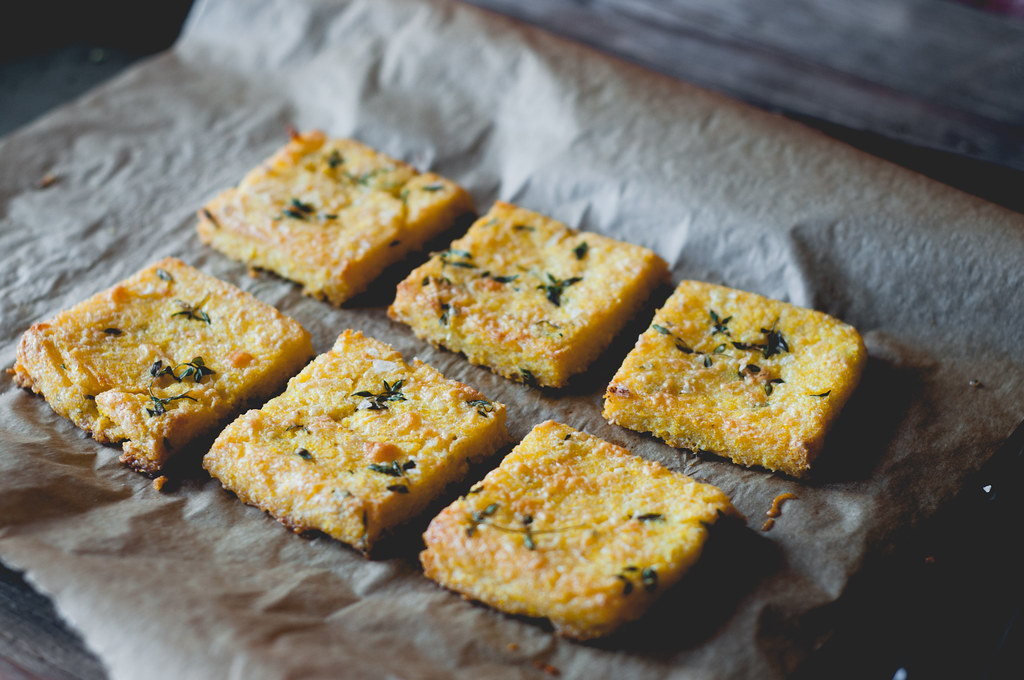
Speaking on the subject of food inspirations, you know the thing is, as much as we, food bloggers, keep creating 'new' recipes, I feel, it is rarely entirely new. This is not something that as bloggers creating 'original' content, we acknowledge often. The reality is that sometime, somewhere in our countless hours of being plugged into the world of food, we come across a recipe that makes itself noticed and wedges itself into our sub-conscious. And, then at the opportune moment, it comes to the fore and gets 'originalised' with a little personalization or even a major overhaul. Nevertheless, the creative moment, I argue is not entirely unique to the current creator and that it is in someway always borrowed from either peer or history.
My recipe today is an entirely free standing original. But, truth be told, I would scarcely have been led to it, if not for
by Emiko that I had read months ago and squirreled away for posterity. Last week, posterity became the present. Of course, I made it my own. I used almond milk, incorporated cheese and thyme into it for flavor and cooked it for far shorter time and baked for far longer than that recipe. Also, my crostata is of flavors suited for the warmer season in the Northern Hemisphere. But, really, she gets first credit and I thank her for the inspiration, especially, since this crostata was a super hit at the dinner I served it at! :)
Thyme and Cheese Polenta Flatbread as Yogurt and Tomato Bruschetta
1 cup coarse corn meal
1 cup almond milk (I use homemade)
1/2 cup water
4-5 sprigs of thyme
1/4 cup of grated cheese (gruyere or aged cheddar works best)
1/3 cup strained yogurt, such as Greek yogurt
2-3 tomatoes, depending on size, sliced
handful of basil
4 T olive oil (for polenta) + 3 T olive oil (for the yogurt) + more for drizzling
a good aged balsamic vinegar for drizzling
salt and pepper as needed
Preheat oven to 375 F.
Bring the almond milk and water to a boil. Add the corn meal and season the mixture. Cook until most of the liquid is absorbed and it looks the consistency of thick porridge. It should be thick enough to hold shape but not crumbly or dry. Whisk in 4 tablespoons of olive oil.
Oil a 9x5 inch baking pan. Sprinkle half the thyme at the base. Spread the cooked polenta in an even layer and press in the remaining thyme on top.
Invert the prepared corn cake onto a baking sheet and sprinkle the cheese on top. Slice into desired shapes and bake for 30-35 minutes until crisp and browned on top.
Remove from oven and cool for at least 10 minutes.
Meanwhile, in a bowl, whisk together the yogurt, 3 tablespoons of olive oil and salt. The oil will loosed the yogurt, making it spreadable and adding flavor.
Spread each polenta flat bread slice generously with the savory yogurt. Top with tomato slices and basil.
Just before serving drizzle olive oil and balsamic vinegar on top.
Voila!
This and that........ and Pantry Staples

So, I have been back from my mini vacation for almost a week now, and, I have been procrastinating on that promise I made you before I left. Truth be told, I am feeling a bit uninspired. I do have a bunch of photos and cool recipes to share but I just have not had the initiative to. Yes, I feel awful and blasphemous saying that but I am hoping, acknowledging and saying it loud will start the process of healing. I felt like taking a break from this space and now am forcing myself to turn around and face my demons and hoping you can help me with it.
Now, I don't really know the cause or reason for the ennui but I can feel the intense sense of pride that I usually feel when I open this space has dissipated in the recent week. No, I am cavalier about it and no, I have not lost interest per se. I suppose, it is only one of those cyclical downswings in the take of things when I ponder about the purpose of it all.



I am not seeking validation here. This space provides me a creative outlet and a place where my individual voice can scream aloud with whatever emotion I am feeling without censure or restraint, if I choose to. I know that. I also know that this space has opened several windows into myself and many doors of opportunities. All this is great! All this makes me smile, laugh and leap with joy. It also makes me wretchedly agonize over
"What next?"
. It takes me to the depths of my lows where I question how
content I am NOT
.
It is easy to chalk this up to the very human fallacy of wanting, seeking, needing more and ever more.... Ok. Fine. I am human. I want more. Accepted. But WHAT?! I am also competitive and restless and need to be constantly challenged to be happy. I bore easily and have a voracious appetite for new experiences. Sometimes, I create my own challenges (not all productive, I'll admit) but more often, I seek an environment that stimulates me.
Now, where can I find that?
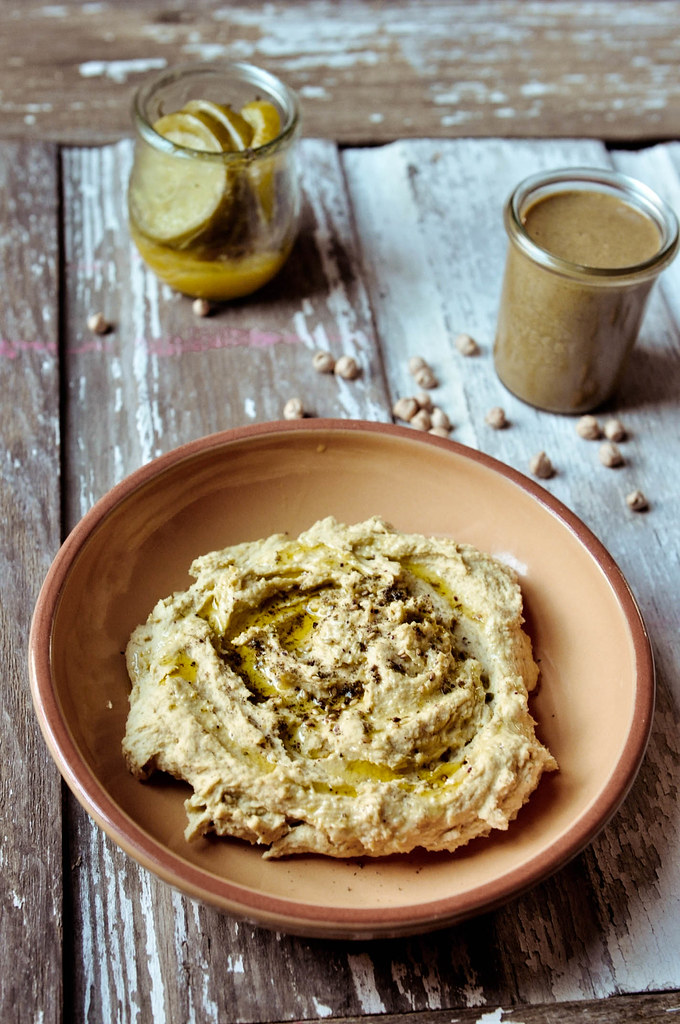
Well, anyway, that is my rant today! :) I am leaving you with some photos of what I have up to lately and a recipe for a few
homemade pantry staples; Rosemary Preserved Lemons, Tahini Sauce leading to a finger licking-ly good Hummus
.
Homemade Tahini Sauce
1 cup white sesame seeds, unroasted
pinch of sea salt to taste
1/3 cup fresh olive oil
Spread the sesame seeds evenly in a baking tray and gently roast them in an oven at 325F turning them over every 5 or so minutes until they are lightly browned, about 15 minutes. Process the seeds while still warm until you get a crumbly meal mix. Continue pureeing while streaming in the olive oil until a smooth, creamy paste forms. Add the salt and pulse to mix. Transfer to an airtight container and cool to room temperature. The sauce will keep in the fridge for a month or more.
Rosemary Preserved Lemons
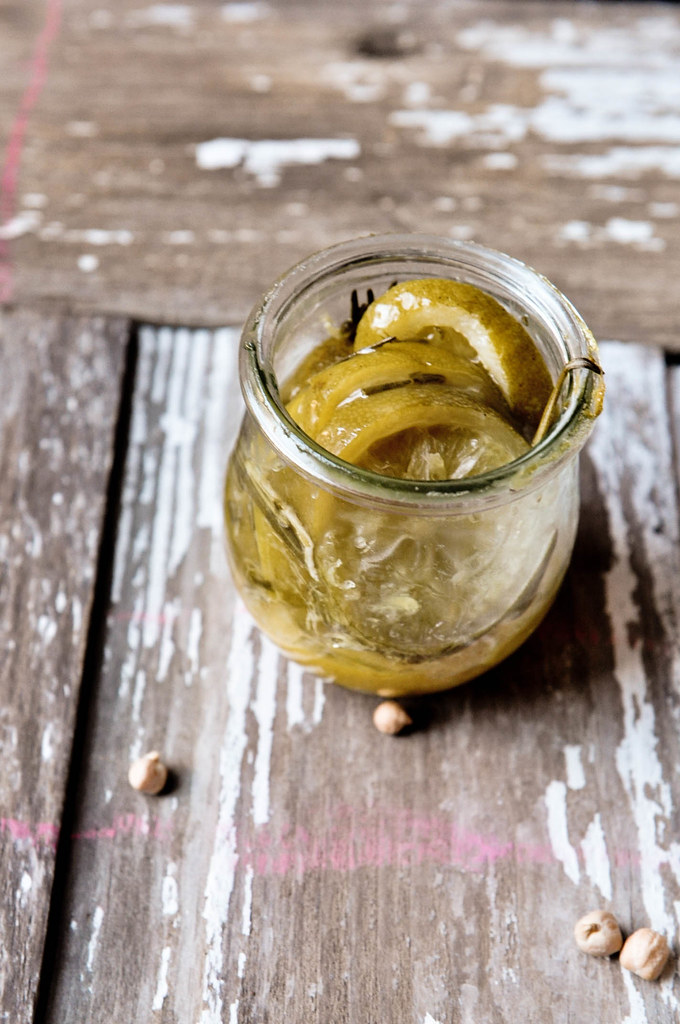
3 ripe lemons, sliced 1/2 inch thick
1/3 cup sea or rock salt
2 healthy sprigs of rosemary
Prepare an airtight glass jar, just large enough to fit the lemons by steaming and letting it air dry. Make sure there is no moisture in it. Tear and place one sprig of rosemary at the base of the jar. Sprinkle a bit of salt. Layer the slices of lemon alternating with more salt. Squeeze down on the slices to release the juice. Fit in all the slices. Top off with remaining salt and the rosemary.
Store in a cool, dark place for a week, shaking it every 2 days. Transfer to the refrigerator and use as needed.
Lemony Z'atar Hummus
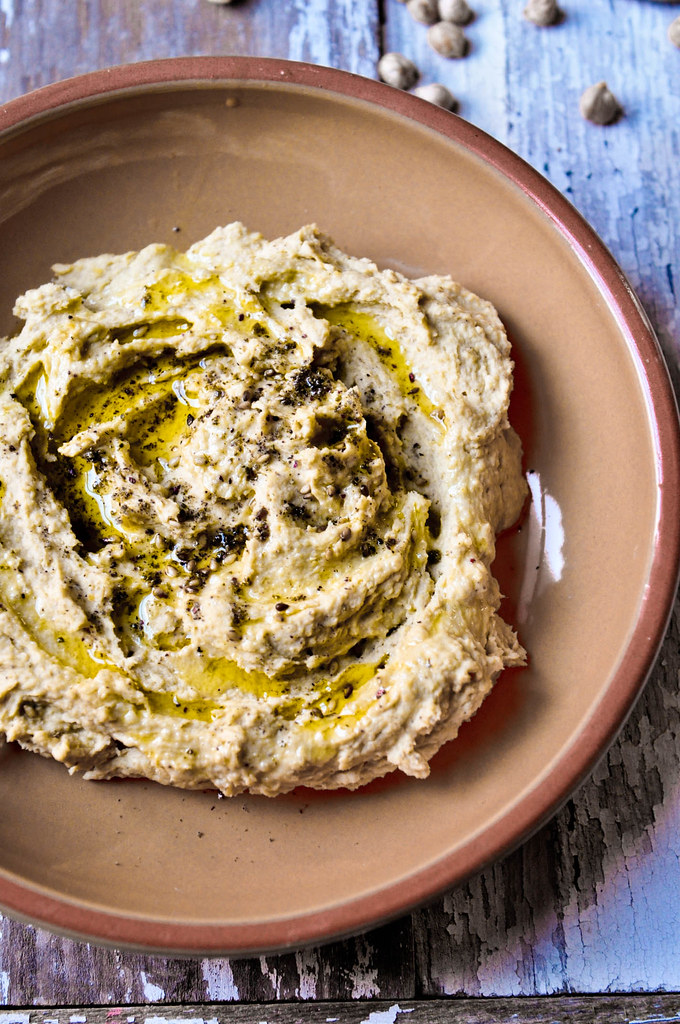
1 cup dried chickpeas, soaked overnight
3 T tahini sauce (from above)
2-3 slices of preserved lemon (from above)
1/4 cup olive oil
water as needed
salt to taste
2 tsp Z'atar
Cook the chick peas in water (pan or pressure cooker) until very soft and the shells fall off. Remove the skins of the chickpeas. Yes, it is tedious but very worth the texture of the hummus. Let the chick peas cool to room temperature. Process the rest of the ingredients till a smooth paste is formed.
Serve with a drizzle of olive oil and sprinkle of z'atar.
The secret of great meals - Lamb Chops with Polenta and Braised Swiss Chard
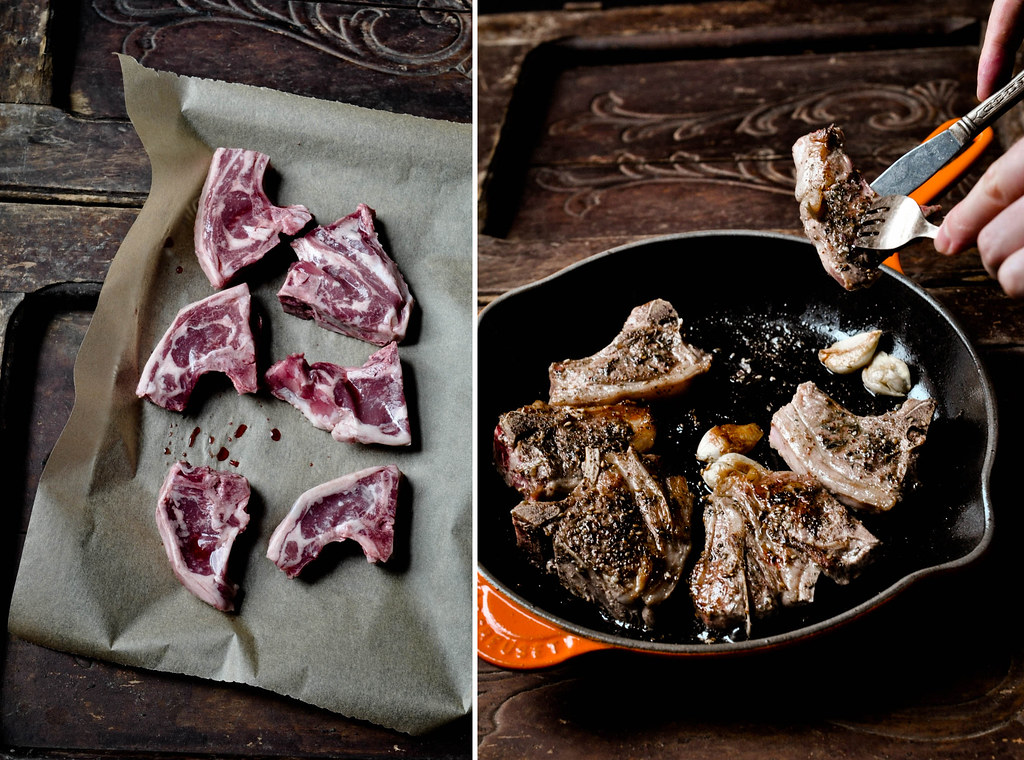
Spring has arrived! It is such a glorious feeling! Finally, it is warm enough to stroll through farmers' market engaging in meaningful conversations and finding out the back stories of the produce on sale! I have been many such trips and coming back with simple, fresh and ridiculously tasty loot! I will put up a post this weekend with recipes for fresh vegetarian meals.
Spring is also the season for ewe lambs. Ok, I know it doesn't sound nice talking about eating a four month old animal but the reality is that it is the tenderest meat you will ever bite into this year. The beauty of any dish is in the ingredients. Spring lambs are so succulent and flavorful that you don't need much cooking to enjoy them. A quick saute and it will be perhaps one of the best dishes you may have had in and out of a restaurant!
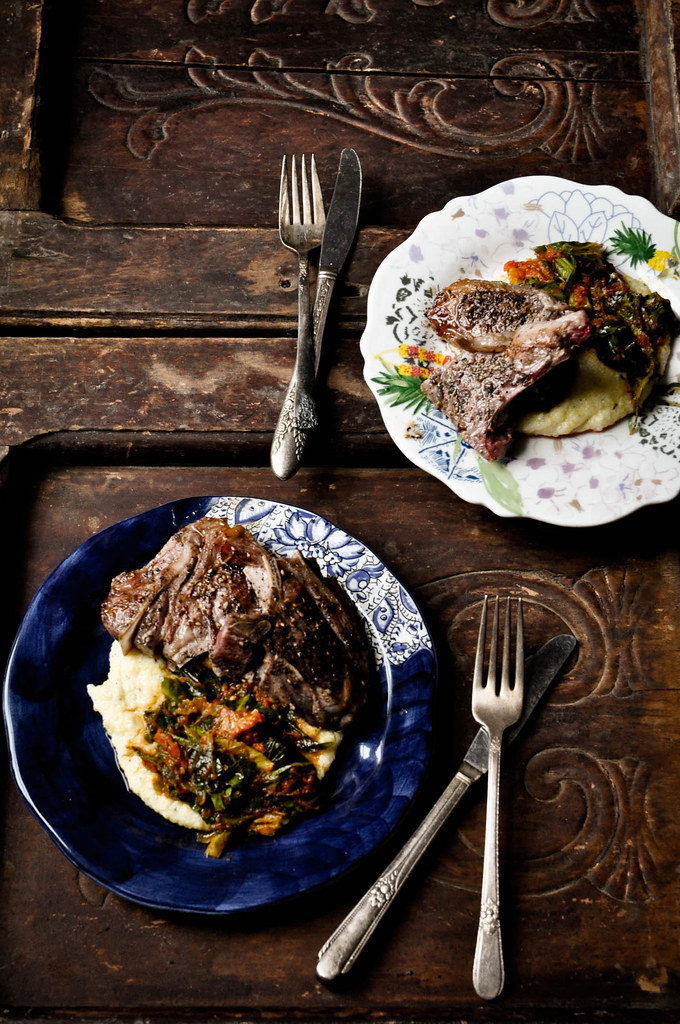
I share with you today a very simple and flavorful dish of lamb chops served on a bed of polenta and braised swiss chard. I actually served this dish with white wine rather than a full bodied red typically paired with red meat. Simply because, the meat itself is delicate and does not need a robust wine to accompany. It is beautifully paired by a crisp, light white like a Chablis.
Lamb Chops with Polenta and Braised Swiss Chard
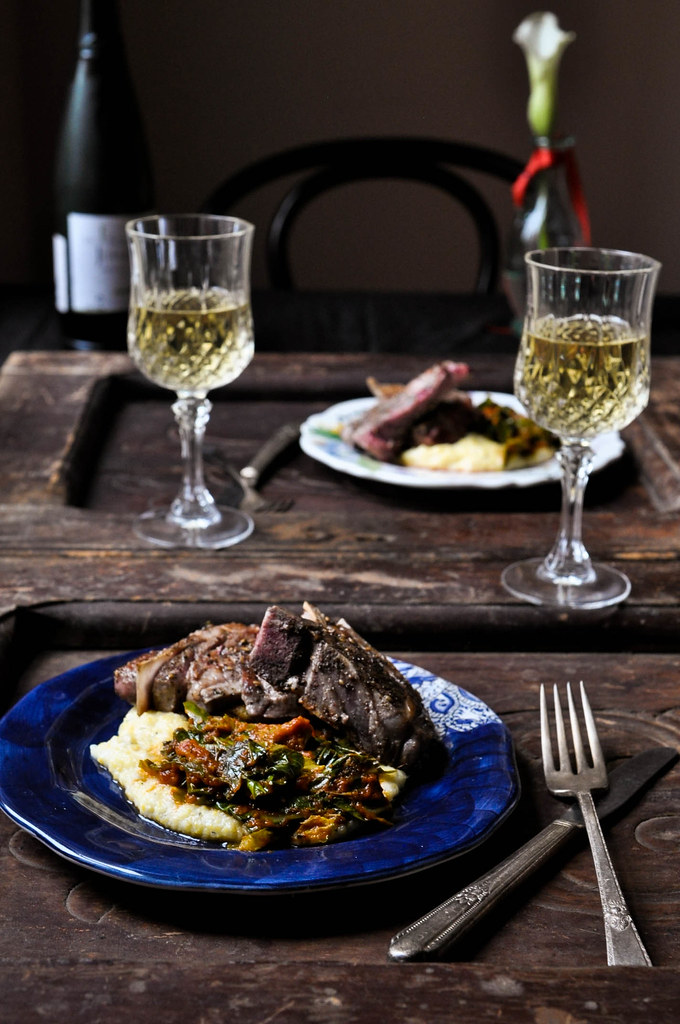
Start with the polenta, them the chard and finally the chops. Cook the chops last, just before serving!
For the Lamb Chops:
6 baby lamb rib chops
3 cloves of garlic, minced
1 T rosemary, minced
1/2 tsp maldon salt or fleur de sel (Use the finest salt you have and use it sparingly. It only takes a little of the good stuff to bring flavor to the meat)
1/2- to 1 tsp fresh cracked pepper based on your taste
1 T good, fruity olive oil
Mix the marinade ingredients and set aside for 10 minutes to allow the flavors to meld together. Meanwhile wash and pat dry the chops. Rub the marinade on both sides of the chops and let rest for 30 minutes up to over night.
When ready to cook, heat a heavy bottomed pan with a light drizzle of olive oil over medium-high flame. I always use cast iron or steel and never non-stick; the sear isn't good and it tastes funny! Arrange the chops in one layer and let them cook undisturbed for two minutes. Gently lift the first chop you placed in the pan to check the sear. If it is good enough turn all the chops over. If not, leave them cook on the side for another minute. Cook on the other side for 3-4 minutes depending on the thickness of the chop for a medium-rare-ish finish.
Cook the polenta according to instructions using milk as the liquid.
For the Braised Swiss Chard:
1 bunch swiss chard, washed, drained and chopped
1/2 cup homemade tomato sauce
2 cloves garlic, smashed
olive oil for the pan
Heat the oil and saute the garlic until the oil is perfumed. Add the sauce and bring to a gentle boil. Add the chard, cover the pan and cook until the leaves are just wilted. Remove from heat.
To serve:
Place some polenta on the plate/bowl. Ladle over it the braised greens and top with the seared chops. Sprinkle fresh grated parmesan if desired!


